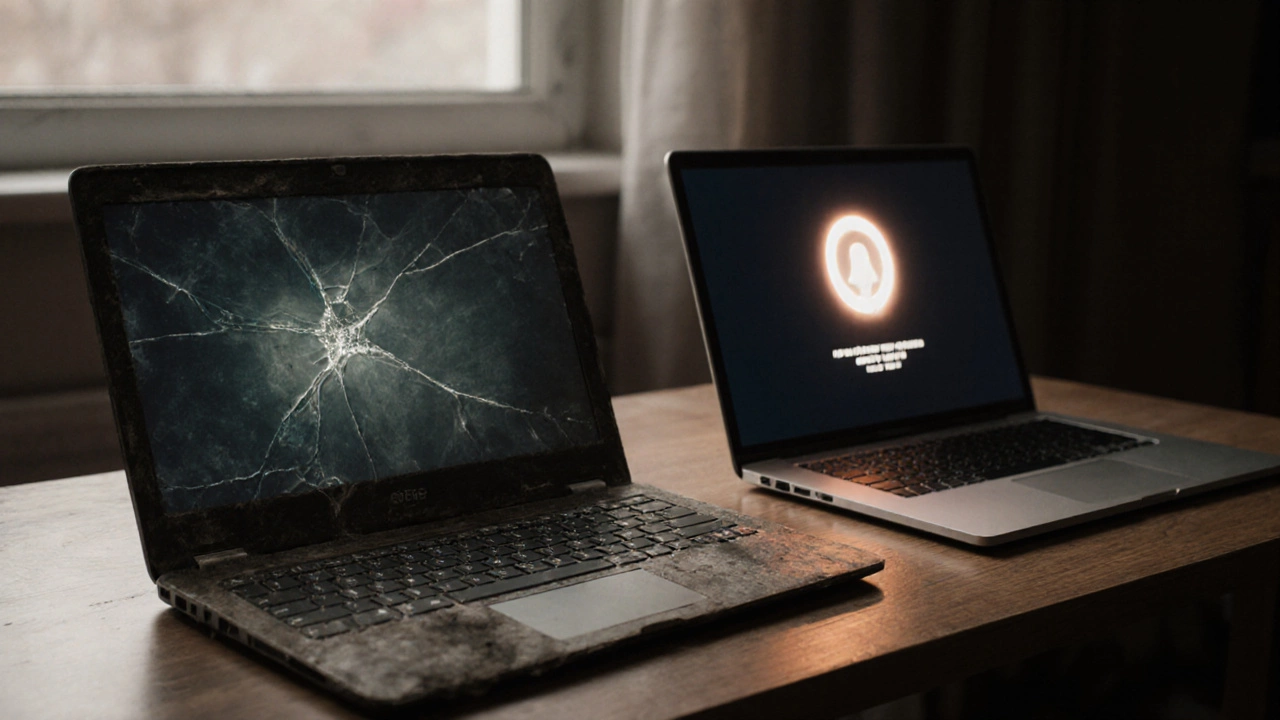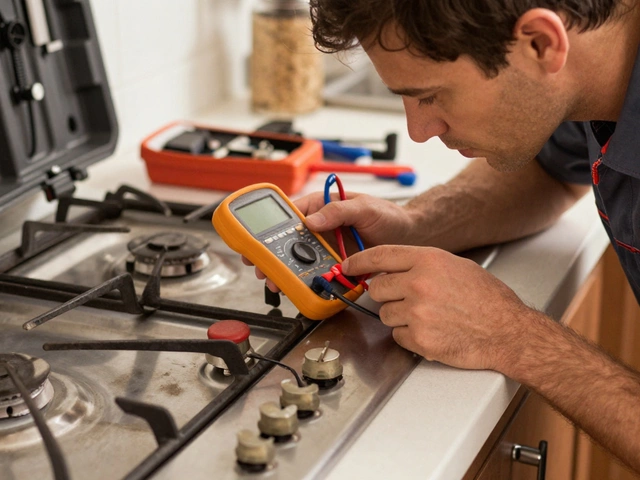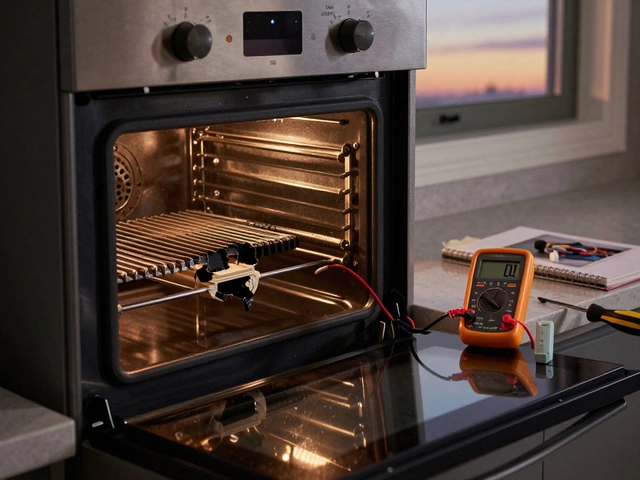Spilling coffee on your laptop always seems to hit when you can least afford a disaster. The worst part? Not all repairs are created equal, and some come with an eye-watering price tag. If you've ever wondered which part of your laptop is the true money pit, you're not alone. People often guess it's the screen or maybe the battery, but the answer isn't always that obvious.
The thing is, prices can swing wildly depending on the brand, model, and what exactly broke. And if your laptop is a few years old, brace yourself—parts get pricier as they become rare. Before you fork over your credit card to a repair shop, it makes sense to know which parts can torch your budget, and why.
- Why Repair Costs Vary So Much
- Top Contenders: Screen vs. Motherboard
- Why Motherboard Repairs Rule the Price List
- Hidden Costs You Don’t See Coming
- Money-Saving Moves (Before Disaster Hits)
- When to Repair vs. Replace
Why Repair Costs Vary So Much
The price tag for fixing your laptop almost never matches your buddy’s story. And there’s a reason for that—lots of reasons, actually. First off, brands matter. Apple parts will usually cost you a lot more than HP or Lenovo, and if you’re unlucky enough to own a gaming laptop, the bill can be well into triple digits for even simple parts.
Then there’s the age of your machine. If it’s a new model, repair shops can grab parts straight from suppliers. But if it’s a couple of years old, getting that exact screen or motherboard is like online hunting for a retro video game—rare and more expensive. On top of that, some companies (think Apple or Microsoft Surface) use parts and screws that only fit their models, bumping up both labor and parts costs.
Complexity of the repair makes a difference too. Swapping out a battery? That’s pretty basic. But changing a motherboard or a high-resolution display is fiddly work that takes more time, and time equals money. Shops often charge $70–$150 per hour for labor alone, so the bill adds up fast.
Check out how different repairs can cost based on type and brand:
| Repair Type | Budget Laptop (USD) | Premium Laptop (USD) |
|---|---|---|
| Screen Replacement | 90–220 | 250–600 |
| Motherboard | 150–300 | 500–900 |
| Battery | 50–120 | 100–350 |
| Keyboard | 45–110 | 100–250 |
There’s also supply and demand. If there’s a worldwide chip shortage (like in 2021), even basic components can shoot up in price.
So, the next time a repair shop quotes you a price, remember: model, age, and part complexity can send costs all over the map. That’s why the laptop repair business is so unpredictable for your wallet.
Top Contenders: Screen vs. Motherboard
If you’re dreading a fat repair bill, the fight usually comes down to the screen and the motherboard. Both can really hurt your wallet, but for totally different reasons.
Let’s start with screens. Cracking or bleeding LCDs are super common. Dropping your laptop, closing it with headphones inside, or just rough handling can easily mess up the display. Replacing a laptop screen can be simple or a nightmare, depending on the brand and model. MacBook and Surface screens are glued in and wafer-thin, so labor costs go up fast. As of last year, fixing MacBook screens at authorized shops sometimes clears $400. For cheap Chromebooks, though, a new screen might only set you back $80-$150, including labor.
The motherboard is where things get real expensive. This board is like a laptop’s highway system. It connects everything—CPU, RAM, ports, the works. If something fries here, repairs often mean swapping out the whole board. Parts alone often run between $300–$600 for mainstream models, and it only gets worse with gaming rigs and premium ultrabooks. Throw in labor, and you’re easily looking at over $800, sometimes creeping close to a new laptop’s price.
Here's a side-by-side of average repair costs:
| Part | Typical Repair Cost (USD) | Repair Difficulty | Risk of Data Loss |
|---|---|---|---|
| Screen (generic) | $120 – $400 | Moderate | Low |
| Motherboard | $350 – $900 | High | High |
| Battery | $80 – $200 | Low | None |
One more thing: motherboard repairs often mean more risk. If the repair shop isn’t careful, you could lose all your files. Screen swaps are way less dicey in that way. So, if you’re weighing where the real costs hide, keep your eyes on the motherboard. That’s the wallet-buster and headache champion, hands down.
Why Motherboard Repairs Rule the Price List
If you’re hunting for the real reason why laptop repair bills skyrocket, the motherboard is usually the main culprit. It’s the heart and brain of your machine—everything connects to it, from the screen to your SSD and keyboard. When something goes wrong here, you’re not just swapping a simple part. Most times, you’re looking at a complex and messy job that eats up time and money.
Why does it cost so much? First off, motherboards are packed with delicate components and customized circuits. Unlike RAM or a battery, you can’t just “pop in” a new board from any laptop. Every model often uses a specific motherboard that fits only that one lineup—and some brands like Apple and Dell love to switch up their designs year after year. That drives parts prices up quickly.
Here’s the real kicker: Most repair shops can’t repair motherboards at the chip level. If your board fries from a liquid spill or a surge, most techs will recommend a full replacement, not a repair. And since new boards are made in limited batches for each generation, replacements tend to get more expensive as your laptop gets older. There’s no discount for vintage tech here—rarity inflates the price.
According to Louis Rossmann, one of the best-known laptop repair experts, “Once a motherboard goes, you’re paying for both the hardest labor and the priciest part. Shops that really know what they’re doing can sometimes fix a simple circuit, but it’s almost always cheaper and safer to replace the whole board.”
Don’t forget about specialist tools—many newer laptops use soldered processors (especially ultraportables and MacBooks), which means you can’t just unplug a broken chip. Shops need special equipment and skills, which adds to the labor charge.
- Limited supply equals higher prices
- Brand-specific boards block cheaper alternatives
- Special equipment is needed for newer models
- Repairs can take days, not hours
If the cost of a motherboard plus labor nudges close to the price of a whole new laptop, you’re in tough territory. In most cases, this is the single most expensive fix you’ll ever see on a repair bill.

Hidden Costs You Don’t See Coming
When you bring your laptop to a repair shop, the first price you hear rarely tells the whole story. Some costs sneak up on you, and by the time you're done, the total can really add up. Understanding these extra charges can help you avoid a nasty shock.
One big thing to watch for: labor. Even if the replacement part itself isn’t that pricey, the time it takes to tear down a laptop and put it back together can double the cost. For example, replacing a motherboard often means removing almost every other component, which isn’t quick or easy—techs usually charge by the hour for this headache.
- Diagnostics fees: Some shops charge just to figure out what’s wrong, especially if you end up not fixing the device there.
- Shipping: If you’ve got a rare or high-end laptop, parts may need to be shipped in. Overnight delivery fees add up fast, and shipping broken laptops to a depot for bigger repairs isn’t free.
- Compatibility issues: Older laptops or niche models often need special parts. Some shops pass this extra hassle on as a surcharge.
- Warranty worries: If you go with third-party repairs, you might void any remaining manufacturer warranty—leaving you on the hook for any future issues.
Here’s a quick look at how these hidden costs stack up for common repairs in a repair shop in 2024:
| Repair Type | Typical Parts Cost | Labor (Average) | Common Extra Fees |
|---|---|---|---|
| Motherboard | $250–$600 | $90–$200 | Diagnostics ($50); Shipping ($30–$70) |
| Screen | $100–$350 | $60–$100 | Compatibility Surcharge ($40+) |
| Keyboard | $40–$120 | $50–$80 | Expedited Parts ($30) |
Another thing people rarely think about is data recovery. If the shop has to back up or migrate your files before replacing a major part, expect a $50–$150 fee—even more for seriously damaged storage. And if your fix takes more than a couple days, you might get charged for storage or "bench fees."
If you want to keep your repair bill reasonable, always ask for an itemized quote up front. And don’t be afraid to ask why a fee exists—good shops will explain where your money’s going, so you know you’re not getting ripped off.
Money-Saving Moves (Before Disaster Hits)
Repairing a laptop shouldn’t wreck your monthly budget. The smartest play? Stop the damage before it gets expensive. Here’s what you need to do to dodge those jaw-dropping laptop repair bills.
- Use a good case and screen protector. Dropping your laptop is still the #1 way screens and motherboards get wrecked. A fitted hard-shell case with shock absorption is way cheaper than a new screen.
- Keep drinks and food away. Liquid spills are the leading cause of motherboard deaths. Just one splash of coffee or soda can do hundreds of dollars’ worth of damage.
- Back up your data regularly. Hard drives and SSDs can fail without warning, and a backup is the only safety net. Cloud services or external drives do the job, and the peace of mind is priceless.
- Clean the vents and keyboard. Dust builds up fast and leads to overheating, which fries motherboards and shortens hardware lifespan. Use a can of compressed air once a month and avoid running your laptop on soft surfaces like beds or couches.
- Update your software. Outdated systems can let viruses and malware run wild, which can corrupt your hardware. Keep your operating system and antivirus tools up to date.
- Handle cords and power plugs with care. Yanking the charger out or letting it dangle is often what breaks charging ports—which aren't cheap to fix.
Here’s a quick look at how much the main disasters can cost if they hit unexpectedly:
| Common Problem | Average Repair Cost (USD) |
|---|---|
| Screen Replacement | $150 - $450 |
| Motherboard Repair | $250 - $700 |
| Liquid Damage Cleanup | $200 - $600 |
| Charging Port Repair | $100 - $250 |
These numbers are from real repair shops as of early 2025, and prices tend to climb for premium models like a MacBook Pro or gaming laptop. One last tip—check if your credit card or home insurance includes accidental damage coverage. Sometimes it quietly covers electronics, and that can save you from draining your bank account if you get unlucky.
When to Repair vs. Replace
Stuck with a busted laptop and not sure if it’s worth fixing? This is where things can get tricky. Some repairs are a no-brainer (like a quick battery swap), but others—especially if your screen or motherboard is toast—should make you pause and do the math.
Here’s the rule of thumb: if fixing your laptop costs more than half the price of a new model with similar power, it’s probably time to shop for a replacement. For example, a motherboard swap can cost anywhere from $250 to $600, sometimes more for high-end models. Meanwhile, basic new laptops go for about $400–$700, while gaming or premium models can shoot over $1,500.
Let’s break down some key points that help you decide:
- If your laptop is less than 3 years old and the laptop repair bill is under 40% of the price of a new equivalent model, it usually makes sense to fix it.
- If parts (like the motherboard or Retina display) are so expensive that your cost is creeping close to the price of an upgrade, replacing is often smarter.
- If your laptop is out of warranty and repair shops say parts aren’t available, a replacement is the only choice.
- If your machine can’t run the latest software or its battery barely lasts an hour, use this as a chance to upgrade.
A study by Consumer Reports in 2024 found that laptops over five years old needed repairs almost twice as often, while those three years and newer were much less likely to fail big-ticket components. Keep age in mind when making the call.
| Repair | Average Cost | Repair or Replace? |
|---|---|---|
| Keyboard Replacement | $80-$150 | Repair |
| Screen Replacement | $150-$400 | Depends on age/cost |
| Motherboard Replacement | $250-$600 | Often Replace |
| Battery Replacement | $60-$150 | Repair |
Before you pull the trigger on either option, always back up your data first. Shops have been known to wipe drives, and new laptops start blank—it’s a nightmare you can skip. And if you’re leaning toward repair, always check if there’s a recall or free fix for your issue; brands like Apple and Dell quietly run repair programs for common problems.





